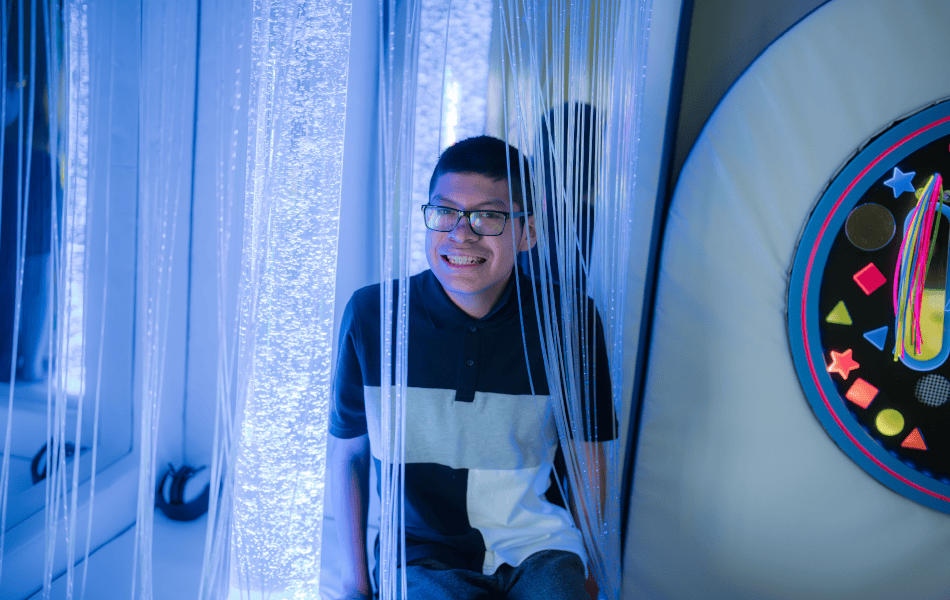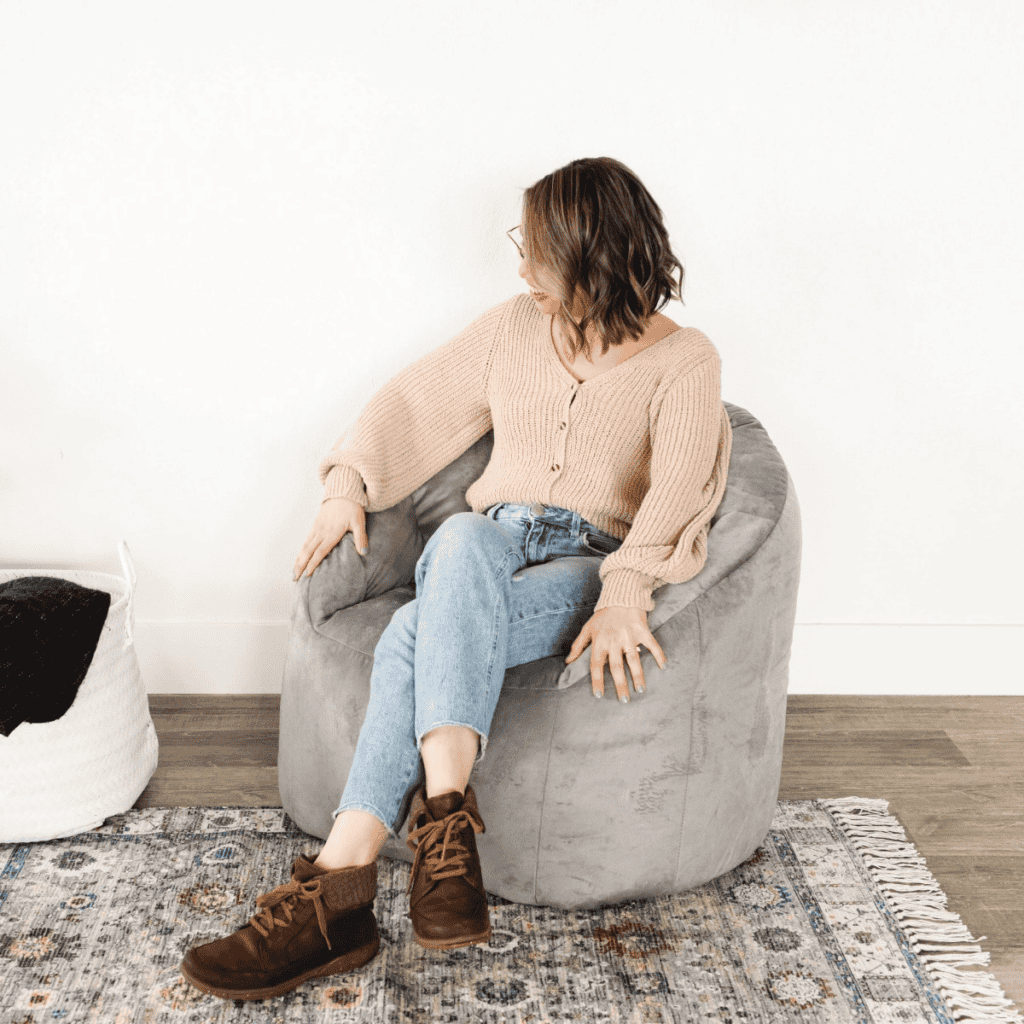
Creating a sensory-friendly space is crucial for supporting individuals with sensory sensitivities, such as autism, ADHD, or sensory processing disorders. These individuals often struggle with environments that aren't adapted to their needs, leading to discomfort, anxiety, or overstimulation. Sensory-friendly spaces help them manage sensory input, allowing for better focus and emotional regulation. Key aspects to consider include soft, adjustable lighting, soundproofing to reduce noise, a variety of soothing textures, spacious layouts for personal space and movement, and the availability of sensory tools like fidget toys or weighted blankets to aid in self-regulation.

Lighting is vital in creating a sensory-friendly space, especially for individuals with sensory sensitivities, such as individuals with autism or ADHD. Harsh, bright lighting can lead to overstimulation, discomfort, and/or anxiety. It is important to incorporate soft, natural lighting whenever possible, to foster a calming environment. If natural light isn’t available or appropriate, dimmable lamps with warm, ambient hues can be used to reduce glare and minimise harsh shadows. Adjustable lighting options allow individuals to customise the brightness to their comfort level, enhancing their control over the environment.
It’s also helpful to integrate multiple light sources, such as floor and table lamps, to create varied lighting zones that accommodate different preferences. This flexibility ensures that lighting is gentle, soothing, and non-intrusive, making the space more comfortable, adaptable and customisable to individual needs. The right lighting choices can significantly reduce stress and overstimulation, creating a peaceful and welcoming atmosphere for everyone.

Noise is a common trigger for individuals with sensory sensitivities, as excessive or unpredictable sounds can be overwhelming and lead to heightened anxiety. To minimise auditory discomfort, implementing soundproofing strategies is essential. Materials such as carpets, curtains, and acoustic panels can effectively absorb sound and reduce background noise, creating a more peaceful environment.
While some individuals may prefer complete silence and calm, others might benefit from soft, calming background sounds, like sounds of nature or low-level instrumental music, to help mask disruptive noises. White noise machines are excellent tools to create tranquil environments with calming sounds, ideal for relaxation, focus, or improving sleep quality. Also, providing noise-cancelling headphones or designated quiet areas can offer essential retreats when sound becomes too overwhelming, promoting comfort and focus.

The feel of materials in a sensory-friendly space is just as important as its visual and auditory elements. Textures can significantly influence the comfort level of a space by either soothing or overwhelming individuals with tactile sensitivities who use them. However, different individuals have varying sensitivities to textures and hence a need analysis is pivotal to understand and customise the incorporation of textures in a particular space according to individual preferences. Incorporating soft and comfortable materials, such as plush cushions, textured rugs, and smooth furniture, can make an environment feel more inviting and secure for some individuals. Conversely, some may enjoy rough or scratchy fabrics to feel calm.
By offering a diverse range of textures, individuals can explore and find what feels best for them, whether it’s the softness of a cushion, the smoothness of a tabletop, or the plushness of a rug. Proprioceptive input refers to the body’s sense of position and movement, helping regulate balance and coordination. Engaging in deep-pressure activities, like using weighted blankets, can provide calming sensory feedback, reducing stress and promoting relaxation through gentle, secure pressure.
This thoughtful selection and balance of tactile experiences are crucial in creating a sensory-friendly atmosphere, promoting a sense of safety and calm. A well-curated tactile environment can significantly enhance the overall sensory experience, fostering relaxation and engagement for individuals with varying sensory needs.

Personal space and freedom to move are essential for individuals who may feel overwhelmed in crowded or cluttered environments. Designing a predictable layout that accommodates both movement and privacy can significantly reduce anxiety and enhance comfort levels. It’s important to ensure there is ample space for individuals to navigate without bumping into obstacles or getting overwhelmed by unexpected surprises, which can be stressful.
Additionally, designating quiet zones within the space is beneficial; using partitions or strategically arranged furniture can create areas where people can retreat if they feel overstimulated. These designated spaces should be free from noise and distractions, providing a calming, quiet environment for individuals to recharge and regain focus.

Sensory tools, such as stress balls, fidget spinners, or weighted blankets, play a vital role in helping individuals manage their sensory input, providing necessary tactile stimulation or calming pressure that supports emotional regulation and focus. These tools can be particularly effective for those with autism, ADHD, or other sensory processing disorders, allowing them to self-regulate in potentially overwhelming environments.
By making these tools easily accessible within a sensory-friendly space, individuals are empowered to use them as needed, without having to ask for assistance. On the other hand, fidget tools offer a more active form of sensory engagement, helping individuals who require extra stimulation to concentrate more effectively during tasks.
Offering a variety of sensory tools ensures that you cater to the different ways an individual manages their sensory needs and customise them based on those particular needs. Whether it’s through calming pressure or active tactile stimulation, these tools provide flexible support for people with diverse sensory preferences, making the environment more adaptable to personal comfort and focus.
Creating a sensory-friendly space involves thoughtful design across multiple elements, from lighting and sound to texture and layout. To make this customised and personal, a sensory need analysis for every individual is vital to address their specific needs. Private sensory spaces require a thorough needs analysis to tailor the environment to individual preferences and sensitivities. On the other hand, public sensory spaces should incorporate flexible elements that offer a variety of sensory experiences and choices to pursue them. This approach ensures inclusivity, allowing individuals to select what suits their sensory needs, promoting a sense of calm and comfort for diverse users. By focusing on soft, adjustable lighting, minimising noise, providing soothing tactile experiences, offering personal space, and including sensory tools, you can build an inclusive environment that fosters comfort and calm. These spaces are not only beneficial for individuals with sensory sensitivities but can also create a more welcoming, adaptable environment for everyone.
References: